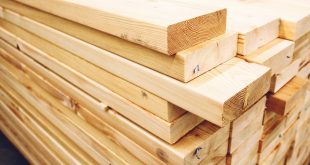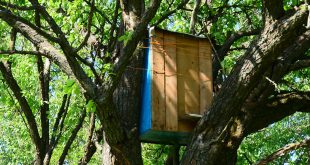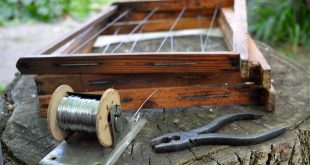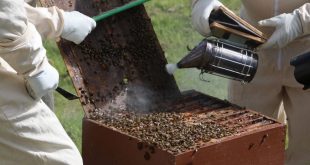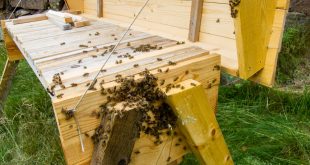Langstroth beehives are synonymous with modern beekeeping. From the invention of the beehive, it has gripped the beekeeping industry like a giant. The iconic beehive provides a great home for honey bee colonies when built well. It is divided into the lower section, beehive boxes and the upper section. Langstroth beehives have several components that are held in it including beehive frames. This article guides you on how to make Langstroth beehive frames. The frames are held in beehive boxes that make up a beehive stack. We will look at deep beehive box frames, medium and shallow beehive box frames. The frames you make can be used in both 8-frame and 10-frame Langstroth beehive setups.
Read More »How to Build a Bee Swarm Trap – DIY Beekeeping
Swarming is a natural process of a hive splitting itself to create two colonies. It is a common occurrence whenever a colony gets too large. Beekeepers are able to catch swarming bees using swarm traps and then transfer the bees to beehives. It it is the natural way of acquiring …
Read More »How to Wire a Beehive Frame
Wiring a beehive frame gives it strength and better support for wax comb. It prevents sagging and enables the frame and comb on it to endure honey extraction without breaking apart. This article shows you how to wire a beehive frame by yourself, using simple home and garden tools. Beekeepers should keep in mind that the purpose of wiring frames is not so much to hold comb in place, but rather to prevent it from sagging.
Read More »How to Make Natural Bee Smoker Fuel
The practice of smoking bees has been about for centuries. It helps distract and lull the bees so as to keep them from stinging. You have various types of smoker fuel to choose from including the commercial bee smoker fuel. But did you know that you can make natural bee smoker fuel using locally available resources? Well, that is right. You can actually do it yourself and get a reliable smoker fuel within the comfort of your home. You need not utilize the common smoker materials such as wood shavings, burlap, or pellets. While these are effective bee smoker fuels, they tend to have a terrible smell. Furthermore, they do not help to get rid some pests such as the varroa mites.
Read More »How to Build a Top Bar Beehive – DIY Beekeeping
Top bar beehives are among the more common types of hives used in beekeeping. You can buy one for your beekeeping operation, or build one if you have the skills and equipment. This article guides you on how to build a top bar beehive, but we'll first take a look at the top bar beehive and its features. The advantages it comes with have made the top bar hive usable in urban beekeeping too. Beekeepers using top bar hives tend to be very passionate, as the beehive sits at waist level, making hive management very easy for the beekeeper. Beginner beekeepers have an easy time learning about beekeeping when they start their apiary with a top bar hive.
Read More » BeeKeepClub Resources and Guides for Beekeepers
BeeKeepClub Resources and Guides for Beekeepers
